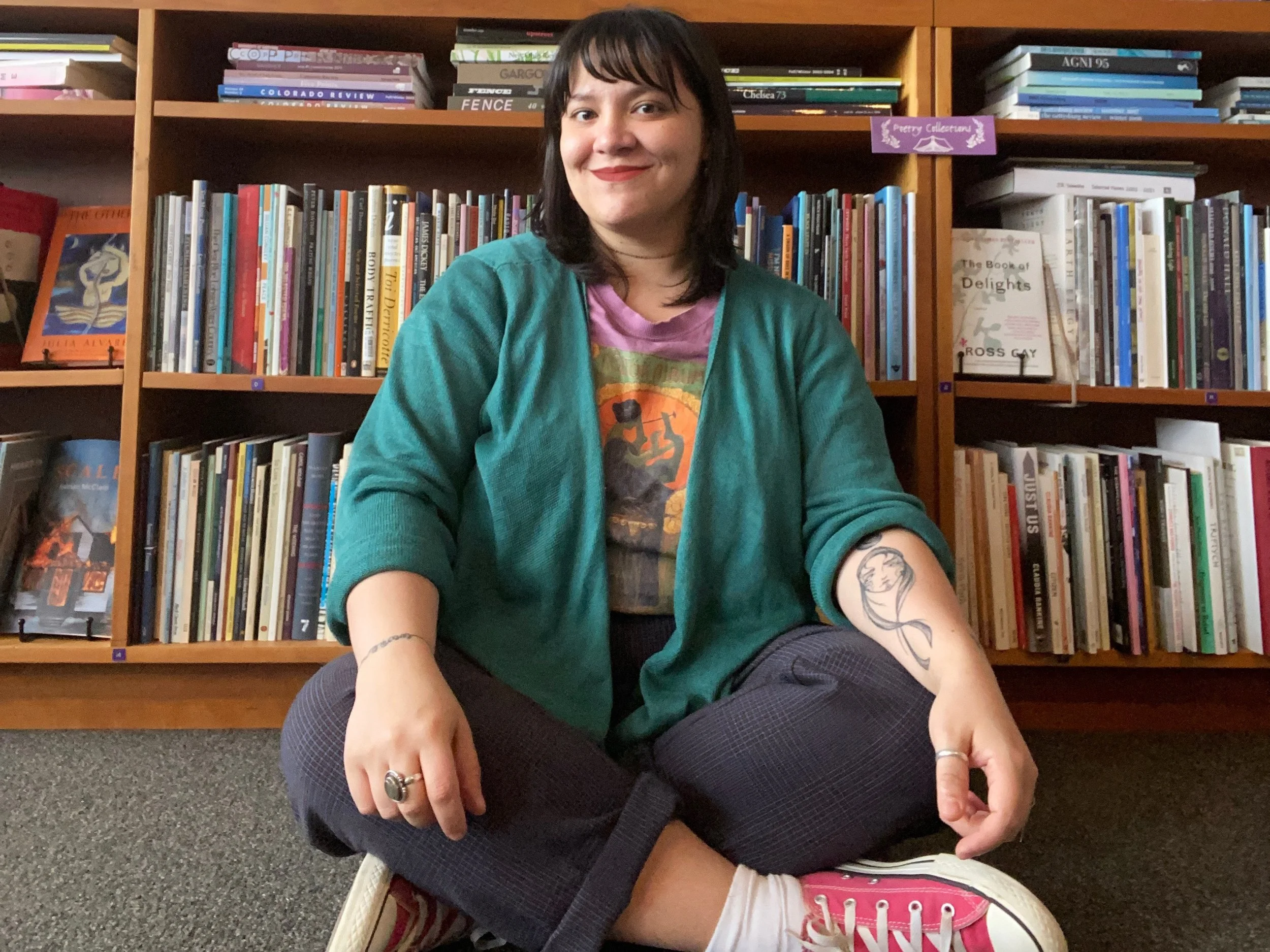Photo courtesy of Joan Grenier
The Emily Dickinson Professor of History Mary Renda, pictured right at the podium, speaks at the Odyssey Bookshop’s “Our American Israel” event.
Olivia Russo ’25
Staff Writer
Nearly seven years after it was originally published, “Our American Israel” by Amy Kaplan was the topic of conversation at the Odyssey Bookshop on Wednesday, April 2.
The panel discussion was held in celebration of the book’s release in paperback, featuring panelists Judith Frank, Mary Renda and Mark Firmani. The panelists reflected on Kaplan’s increasingly urgent insights into the shared sense of identity between Israel and the United States that has been forged by popular narratives in American news media, fiction and film.
In “Our American Israel,” Kaplan explores parallels that “[form] the basis of American identification with Israel,” such as each nation’s history as a settler society that displaced Indigenous people from their land. The “Americanization” of the idea of a Jewish state that facilitated this identification with Israel presented Zionism as an enactment of “American ideas of modern development,” according to passages from the book.
Kaplan, a member of Mount Holyoke’s English department faculty from 1986 to 2002, had previously published several other notable works in the field of American studies before her death in 2020, such as “The Anarchy of Empire in the Making of U.S. Culture” and “Cultures of United States Imperialism.”
Emily Dickinson Professor of History Mary Renda noted that she first encountered Kaplan when reading “Left Alone with America,” an essay in her anthology “Cultures of United States Imperialism.” Kaplan had found that the presence of Africa loomed over storytelling about American national identity, speaking to its centrality in the “American imperial unconscious.” According to Renda, this unconscious consisted of unspoken yet formative ideas that arose from enslavement, genocide, exploitation and violence at the heart of the nation. This backstory “haunts” and is repressed by the narrative presented through fiction, journalism and film of a supposedly exceptional, innocent, freedom-loving, self-made America.
Renda bonded with Kaplan at Amherst College, and she shared with the audience that their conversations taught her to “see more and more of what was obscured by the popular narratives woven through canonical works and the cultural artifacts of life.”
Renda also discussed how Kaplan exposes the mechanisms by which Palestinians, and the violence committed against them, were rendered invisible due to the deeply-held beliefs in the significance of a Jewish state as a “universal symbol of social justice.”
Frank reflected on their own struggles in coming to terms with the brutality of Israel’s occupation, as they and Kaplan “traveled the path to anti-Zionism together.” They translated these feelings into works of fiction, such as their novel “All I Love and Know.”
Frank discussed Kaplan’s exploration of the novel “Exodus” and its film adaptation, which had a huge impact on “Americanizing” the Zionist narrative of Israel’s origins and constructing the mainstream historical narrative of Israel’s birth that America identified with.
Firmani, who worked closely with Kaplan on his dissertation and as a research assistant for “Our American Israel,” emphasized the importance of reading her conclusions and applying them to the present moment. In the book, Kaplan tracks “the perceptual field” within which cultural artifacts, laws and policies shape each other to form a consensus about America’s attachment to Israel, which “came to seem like common sense.” The history of the bond between America and Israel has been entangled in the narratives Americans have told about their own national identity.
Kaplan writes that Israel is seen as a “mirror” of America, and examining this mirror allows us to understand ourselves as actors, not observers, able to take responsibility for the consequences of our actions. Firmani commented that our failure to heed such warnings has manifested in the current mass suffering and death of Palestinians. Heeding Kaplan’s message, he said, “We must ask how we can reveal the mirror that enables genocide, accepting our responsibility for these tragic consequences.”
Eden Copeland ’27 contributed fact-checking.


















